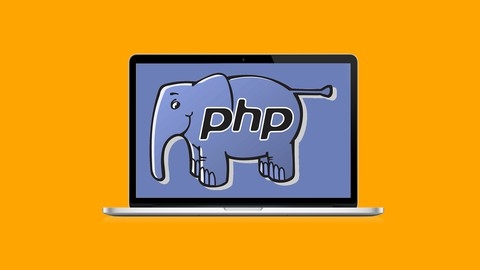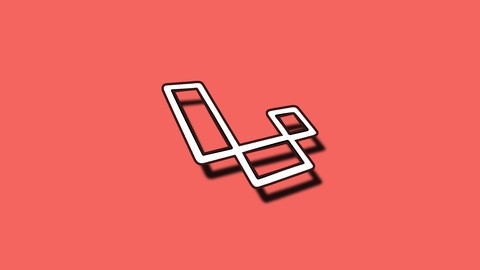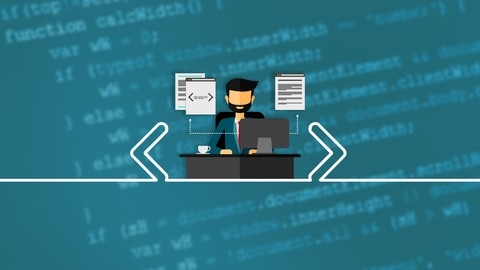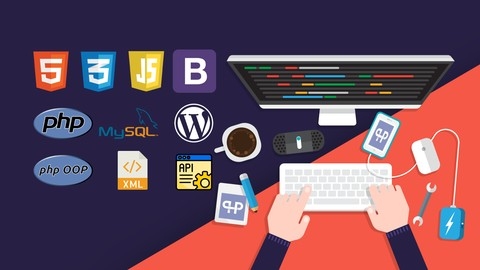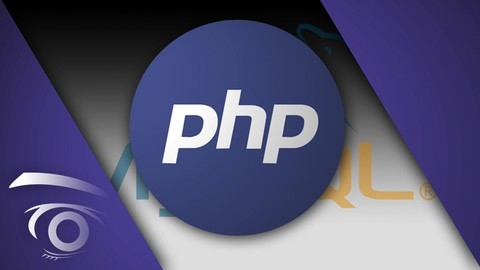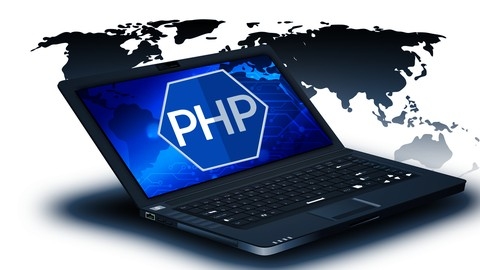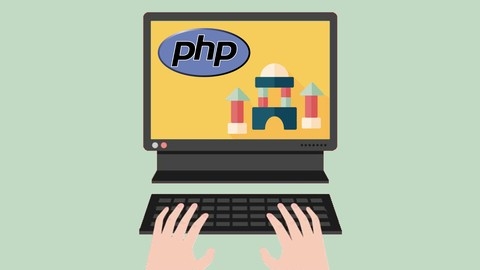PHP for Beginners - Become a PHP Master - CMS Project
The syllabus covers a wide range of topics, starting with the basics of embedding PHP in HTML, using variables, arrays, and control structures.
As you progress, you’ll dive into custom functions, built-in PHP functions, working with forms, and connecting to databases using MySQL and PHPMyAdmin.
A significant portion is dedicated to building a full-fledged Content Management System (CMS) from scratch, covering everything from creating the database structure to implementing features like categories, posts, comments, user management, and an admin panel.
It also touches on crucial aspects like PHP security (preventing SQL injection and password encryption), handling HTTP requests, cookies, and sessions.
You’ll even get an introduction to object-oriented programming in PHP and working with files.
As if that wasn’t enough, the instructor keeps adding new lectures covering advanced topics like pagination, tracking online users, improving the login system, refactoring code, creating a registration system, implementing pretty URLs, a forgot password feature, post likes, creating separate admin areas for logged-in users, and even adding multi-language support.
Throughout the course, you’ll be working on practical exercises and a real-world project, ensuring you gain hands-on experience.
The instructor has a knack for explaining complex concepts clearly and providing plenty of examples.
PHP with Laravel for beginners - Become a Master in Laravel
The course starts by setting up your local development environment, whether you’re on Windows or Mac.
You’ll learn how to install the necessary tools like PHP, MySQL, Node.js, and Laravel itself.
This hands-on approach ensures you have a solid foundation before diving into the core concepts.
Once the setup is complete, you’ll explore the fundamentals of Laravel, including routing, controllers, views, and the Blade templating engine.
You’ll learn how to create and manage routes, pass data between controllers and views, and leverage the power of Blade to build dynamic templates.
The course then dives deep into database management with Laravel.
You’ll learn about migrations, which allow you to version control your database schema.
You’ll also work with raw SQL queries and the powerful Eloquent ORM (Object-Relational Mapping) to interact with your database seamlessly.
As you progress, you’ll tackle more advanced topics like Eloquent relationships, which enable you to model complex data structures with ease.
You’ll learn about one-to-one, one-to-many, many-to-many, and even polymorphic relationships, giving you the tools to build robust and scalable applications.
The course covers essential features like form handling, validation, file uploads, and user authentication.
You’ll learn how to create secure login systems, implement middleware for route protection, and manage user sessions.
Version control is a crucial aspect of software development, and this course introduces you to Git and GitHub.
You’ll learn how to create repositories, clone projects, manage branches, and collaborate with others through pull requests.
The course also covers practical topics like sending emails, data seeding, and working with Laravel components.
You’ll learn how to integrate third-party services like Mailgun for email delivery and explore advanced techniques like polymorphic relationships.
As you near the end, the course takes you through upgrading an existing Laravel application from version 5.2 to the latest version, giving you valuable experience in handling real-world scenarios.
Throughout the course, you’ll work on several projects, solidifying your understanding of Laravel’s features and best practices.
The instructor, Edwin Diaz, provides clear explanations and practical examples, ensuring you gain hands-on experience with every concept.
Learn Object Oriented PHP By Building a Complete Website
This course provides a comprehensive introduction to Object-Oriented Programming (OOP) in PHP.
You’ll start by learning the fundamentals of PHP, including variables, arrays, loops, functions, and conditionals.
Once you have a solid grasp of the basics, the course dives into OOP concepts.
You’ll learn about classes, methods, properties, visibility modifiers, and the __get and __set magic methods.
Additionally, you’ll explore class inheritance, a crucial aspect of OOP.
As you progress, the course covers advanced OOP topics such as static properties and methods, abstract classes and methods, autoloading classes, and the final keyword.
You’ll also learn how to iterate over objects, a valuable skill for working with collections.
The course then focuses on integrating OOP with databases using the PDO (PHP Data Objects) library.
You’ll learn how to create a database class, establish a connection, fetch data, and perform insert, update, and delete operations.
To solidify your understanding, you’ll build a complete website project from scratch.
This hands-on experience will teach you how to structure your project, create controllers, models, and views, and implement features like user registration, login, sessions, and access control.
Throughout the course, you’ll work with modern PHP syntax and best practices, ensuring you’re well-prepared for real-world development.
By the end of this course, you’ll have a strong foundation in OOP and the ability to build robust, maintainable PHP applications that leverage databases.
Create an eCommerce Website Using Laravel (PHP & MySQL)
The course starts by introducing you to the Laravel framework and guiding you through the installation process for both Windows and Mac operating systems.
This ensures you have the right setup to begin building your eCommerce project.
Once the basics are covered, you’ll dive into the core concepts of Laravel, including its directory structure, routing, controllers, views, and the powerful Blade templating engine.
You’ll also learn about integrating Sass, Mix, and Webpack for efficient styling and asset management.
A significant portion of the course is dedicated to designing the layout of your eCommerce website.
You’ll learn how to create the homepage, navigation bar, and other essential components using HTML, CSS (with Sass), and Laravel’s Blade templates.
Authentication is a crucial aspect of any eCommerce platform, and this course covers it in detail.
You’ll set up a complete authentication system, including user registration, login, logout, and form error handling, ensuring a secure and user-friendly experience.
Moving on, you’ll learn how to create an admin panel from scratch.
This includes setting up the admin middleware, creating a sidebar menu, and managing products, categories, and colors.
You’ll work with database migrations and models to store and retrieve data efficiently.
The course then shifts its focus to the front-end pages of your eCommerce website.
You’ll learn how to set up product pages, style components like the product box, and implement essential features like adding products to the cart and displaying success popups.
Building an eCommerce website wouldn’t be complete without a shopping cart system.
This course covers creating a cart, adding and removing items, calculating totals, and setting up the checkout process.
You’ll even integrate the popular Stripe payment gateway, allowing customers to make secure online payments.
Additionally, you’ll learn how to manage orders within the admin panel, including storing order details, displaying success messages, and creating a user account page where customers can view their order history.
Finally, the course covers implementing a wishlist system, enabling users to save products for later consideration or purchase.
The Complete 2023 PHP Full Stack Web Developer Bootcamp
The syllabus covers a wide range of topics, starting from the basics of web development and gradually building up to advanced concepts.
You’ll begin by understanding the fundamentals of how websites work, including protocols like HTTP, DNS, and client-server technology.
This lays a solid foundation for your journey as a full stack developer.
The course then dives into HTML5 and CSS3, teaching you how to structure and style web pages.
You’ll learn about tags, selectors, and various other elements through hands-on exercises and projects like creating a news page or a product landing page.
Once you’ve grasped the front-end technologies, the course introduces you to JavaScript, covering language syntax, functions, objects, and DOM manipulation.
You’ll even build a calculator toy and a guessing number game to reinforce your skills.
Moving on, you’ll explore the back-end with PHP, starting from the basics and progressing to advanced concepts like object-oriented programming (OOP), XML, JSON, and RESTful APIs.
The syllabus includes sections on MySQL, where you’ll learn to create databases, tables, and perform CRUD operations using PDO and MySQLi.
Interestingly, the course also covers WordPress, guiding you through setting up a complete blogging website, including domain registration, hosting, theme installation, and plugin configuration.
Throughout the course, you’ll work on various projects that integrate multiple technologies, such as a database class with OOP, CRUD operations with a Post class, and more.
This practical experience is invaluable for aspiring full stack developers.
The syllabus also includes interview questions for HTML, CSS, JavaScript, PHP, MySQL, and WordPress, helping you prepare for job interviews.
Additionally, you’ll have access to valuable resources like PHP frameworks and PHP projects.
Object Oriented PHP & MVC
The course starts by introducing you to the fundamentals of OOP in PHP.
You’ll learn about classes, properties, methods, constructors, destructors, access modifiers, getters, setters, inheritance, and static methods/properties.
This lays a solid foundation for understanding OOP concepts.
Once you have a grasp of OOP, the course dives into the MVC architectural pattern.
You’ll learn what MVC is and how it works, as well as the workflow involved in building an MVC-based application.
The instructor guides you through creating the folder structure, setting up the core files, and directing everything through an index.php file.
The course then focuses on implementing the MVC workflow within the framework.
You’ll create a base controller class, learn how to load views, work with configuration files and file uploaders, and include headers and footers.
Additionally, you’ll explore the PDO (PHP Data Objects) library for interacting with databases and build a custom database class.
With the framework in place, the course shifts to building a practical application.
You’ll start by setting up the initial app and database, creating pages with Bootstrap, and implementing user authentication features like registration, login, and logout.
The instructor covers form validation, user models, email checks, and session management.
Next, you’ll add functionality for managing posts.
This includes creating a posts controller, implementing access control, building a post model, displaying posts, adding forms for creating and editing posts, and handling post insertion, updates, and deletions.
Finally, the course covers deploying the application, ensuring you can take your MVC-based PHP app live.
Throughout the course, you’ll work with modern PHP syntax and features, preparing you for real-world development.
PHP & MySQL - Certification Course for Beginners
You’ll start by diving into the fundamentals of PHP, including syntax, variables, data types, and operators.
You’ll learn how to work with strings, arrays, and objects, as well as how to implement control structures like conditional statements and loops.
The course then guides you through creating and handling forms in PHP, covering essential concepts like POST and GET methods, form validation, and handling user input securely.
Once you have a solid grasp of PHP, you’ll move on to MySQL, a powerful database management system.
You’ll learn how to create and manage databases, tables, and users using PhpMyAdmin, a user-friendly web interface.
The course covers SQL (Structured Query Language) in depth, teaching you how to perform various operations like selecting, inserting, updating, and deleting data from your MySQL databases.
You’ll also learn about prepared statements, which are crucial for preventing SQL injection attacks.
Throughout the course, you’ll work on practical examples and projects, solidifying your understanding of PHP and MySQL integration.
You’ll learn how to connect to a MySQL database from PHP, retrieve and display data, and handle user input securely.
By the end of this course, you’ll have the skills and confidence to build dynamic, data-driven web applications using PHP and MySQL.
PHP OOP: Object Oriented Programming for beginners + Project
The course starts by covering the fundamentals of OOP in PHP, including defining classes, methods, properties, and instantiating objects.
You’ll learn about class inheritance, access control modifiers, static modifiers, getters, and setters.
These concepts lay the foundation for building robust, modular applications.
As you progress, you’ll dive into a real-world project - building a photo gallery system from scratch.
This hands-on approach reinforces the theoretical concepts you’ve learned and gives you practical experience in developing a complete application using OOP principles.
One of the course’s highlights is the creation of a custom database class, which abstracts away the complexities of database interactions.
You’ll learn how to set up a database connection, execute queries, and implement helper methods for common operations.
The course then guides you through building a user class, covering essential features like user authentication, sessions, and access control.
You’ll create login and logout functionality, ensuring secure access to the admin area.
File handling is another crucial aspect covered, including understanding file permissions, working with magic constants, and uploading files securely.
The course dives deep into implementing CRUD (Create, Read, Update, Delete) operations for managing photos and users.
You’ll learn how to abstract these operations, making your code more reusable and maintainable.
As the project progresses, you’ll build a photo class that inherits from a parent class, demonstrating the power of inheritance and code reuse.
You’ll also implement features like displaying photos, handling file uploads, and creating dynamic image paths.
The course covers advanced topics like creating an admin dashboard with Google API charts, tracking page views, and displaying dynamic data visualizations.
For the front-end, you’ll learn how to set up the gallery system, implement pagination for displaying photos, and create modals for image previews.
Additionally, the course explores extra features like enabling image selection with jQuery, setting user profile pictures using AJAX, creating photo libraries with sidebars, and implementing notifications for CRUD operations.
Finally, you’ll learn how to take your application online by setting up hosting, displaying errors, uploading files, creating databases, and configuring the application for a live environment.
Throughout the course, you’ll work with modern tools like text editors, XAMPP for local development, and popular libraries like jQuery for enhancing the user experience.
PHP for Beginners
The course starts by guiding you through the installation and setup of the required software, including a web server, database server, and code editor.
You’ll begin by learning the fundamentals of PHP, such as variables, data types, operators, and control structures like if statements and loops.
The course then introduces you to arrays, a powerful data structure for storing and manipulating collections of data.
As you progress, you’ll dive into HTML, learning how to structure and format web pages using elements like headings, paragraphs, lists, and links.
You’ll also learn how to seamlessly integrate PHP with HTML, enabling you to create dynamic content that can be tailored to each user’s needs.
The course covers databases extensively, teaching you how to create, read, update, and delete data using SQL queries.
You’ll learn how to connect to a database from PHP and retrieve and display data on your web pages.
Additionally, you’ll explore database relationships, such as one-to-one, one-to-many, and many-to-many, allowing you to model complex data structures.
Moving forward, you’ll learn about object-oriented programming (OOP) in PHP, a paradigm that promotes code reusability, maintainability, and organization.
You’ll create classes, define properties and methods, and leverage concepts like inheritance and encapsulation.
The course also covers essential topics like form handling, file uploads, user authentication, and session management.
You’ll learn how to validate user input, securely store passwords, and restrict access to certain pages based on the user’s login status.
As you near the end, you’ll explore more advanced topics, such as class autoloading, sending emails from PHP, handling errors and exceptions, and deploying your code to a live server.
Throughout the course, you’ll work on a real-world project, a Content Management System (CMS), allowing you to apply the concepts you’ve learned in a practical setting.
You’ll also learn how to integrate JavaScript and CSS to enhance the functionality and appearance of your web applications.
By the end of this course, you’ll have a solid understanding of PHP and the skills necessary to build dynamic, database-driven websites.
Write PHP Like a Pro: Build a PHP MVC Framework From Scratch
The course starts by introducing you to the fundamentals of the MVC (Model-View-Controller) pattern, guiding you through the process of adapting plain PHP code to fit this architectural pattern.
You’ll learn how to organize your code into models, views, and controllers, laying the foundation for a well-structured and maintainable application.
As you progress, you’ll dive into advanced topics such as routing, where you’ll learn how to map URLs to specific controllers and actions using regular expressions.
This allows for flexible and dynamic routing, enabling you to create clean and user-friendly URLs for your application.
One of the standout features of this course is its focus on class organization and autoloading.
You’ll learn how to automatically load classes without having to manually require them, streamlining your development process.
Additionally, you’ll explore the power of namespaces, which help you organize your classes into logical groups and avoid naming conflicts.
The course covers essential concepts like dependency injection and autowiring, which simplify the management of dependencies between objects.
You’ll also learn how to use a service container to manage and resolve dependencies, making your code more modular and testable.
Error handling is a crucial aspect of any robust application, and this course dedicates a chapter to teaching you how to handle exceptions, manage environments, and return appropriate HTTP status codes.
You’ll learn how to throw custom exceptions, toggle the display of error details, and log errors to a file on the server.
As you progress further, you’ll delve into advanced topics such as HTTP method-based routing, encapsulating requests and responses into classes, and implementing middleware.
Middleware allows you to modify requests and responses, enabling you to add functionality like authentication, logging, or caching without cluttering your controller code.
The course also covers template engines, teaching you how to use simpler, custom syntax for variables and control structures in your view templates.
You’ll learn about template inheritance, which allows you to create base templates and extend them with child templates, promoting code reuse and consistency.
Throughout the course, you’ll work on building a complete PHP MVC framework from scratch, solidifying your understanding of the concepts through practical, hands-on exercises.
The instructor’s clear explanations and step-by-step approach ensure that you grasp each concept thoroughly before moving on to the next.
